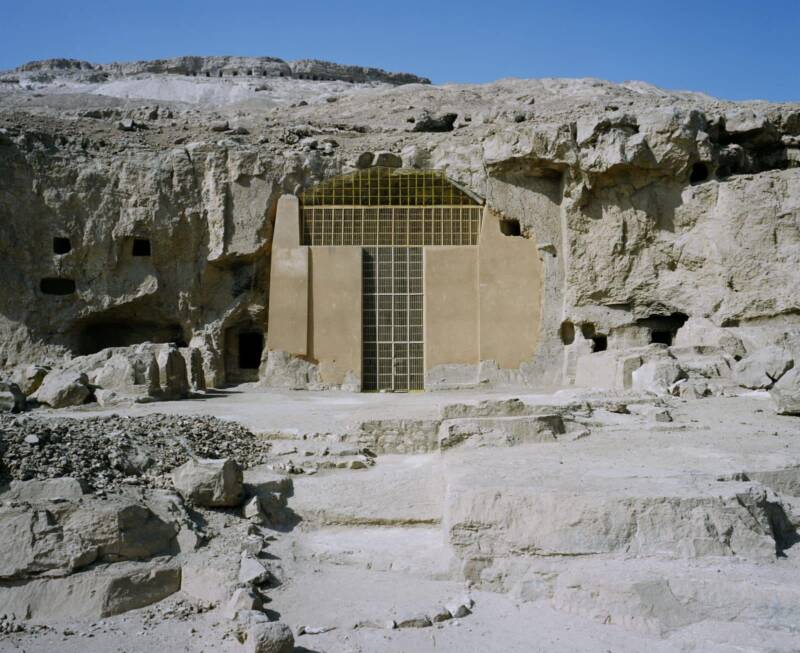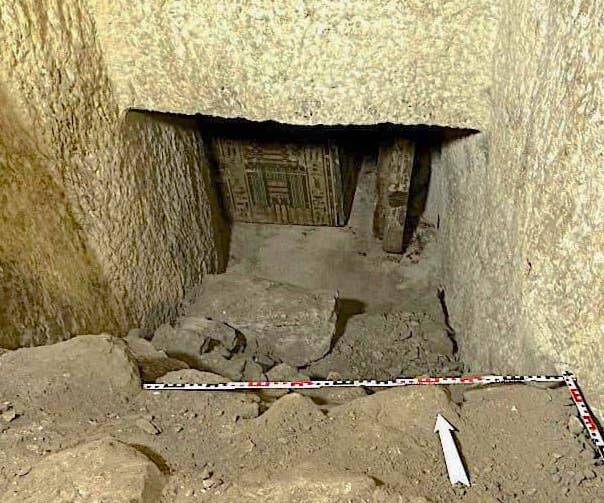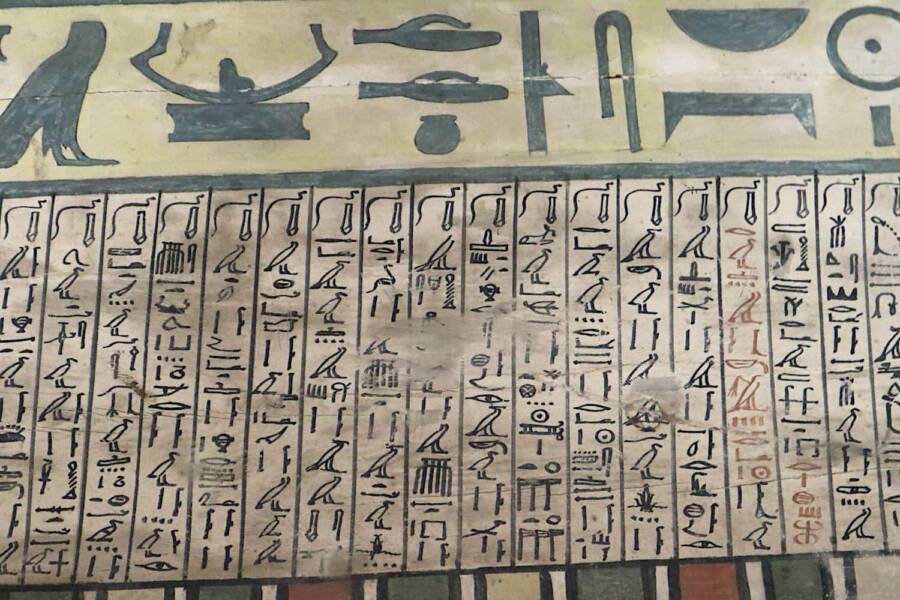While exploring the tomb of the ancient regional governor Djefaihapi I in Asyut, archaeologists recently discovered the burial of his daughter Idi, a priestess of the goddess Hathor.

Egyptian Ministry of Tourism and Antiquities/FacebookThe entrance to the tomb of the priestess Idi and her father, Djefaihapi I, in Asyut, Egypt.
Archaeologists recently unearthed the 3,900-year-old burial of Idi, a high-ranking priestess known as the “Lady of the House,” inside a concealed tomb in Asyut, Egypt.
Idi’s burial chamber is located inside the ornate tomb of her father, Djefaihapi I, who served as the governor of Asyut during the reign of Pharaoh Senusret I. Researchers discovered Idi’s two coffins, one inside the other, decorated with intricate hieroglyphics that depict the journey into the afterlife and mention her role as a priestess of Hathor, the goddess of love and protector of women.
Now, Egyptologists hope that this discovery will shed light on ancient Egyptian burial customs and the influence of prominent women like Idi.
Archaeologists Uncover The Burial Of Priestess Idi, “Lady Of The House”

Egyptian Ministry of Tourism and Antiquities/FacebookThe passageway leading down into Idi’s burial chamber.
The burial of Idi, who lived during ancient Egypt’s Middle Kingdom period roughly 4,000 years ago, was discovered as part of a joint archaeological mission between Egyptian and German researchers.
Idi’s burial was discovered 45 feet underground on the north side of the large tomb dedicated to her father, Djefaihapi I. This rock-cut tomb measures 36 feet high and 230 feet across, and is covered with paintings and inscriptions.
This archaeological dig has been 20 years in the making, and researchers have now finally glimpsed Idi’s burial for the first time since she was interred in 1880 B.C.E.

Egyptian Ministry of Tourism and Antiquities/FacebookThe elaborately decorated coffin made for Idi.
Idi’s two coffins each feature elaborate designs and hieroglyphics describing the journey of Idi’s remains to the tomb. With one coffin measuring 7.5 feet long and the other 8.5 feet long, each is impressive in size.
Ornamentations adorn both the inside and outside of the coffins in ways that are unparalleled for other coffins of a similar age. In particular, the wealth of text is very promising for researchers looking to understand the position of women in Egypt’s Middle Kingdom period.
“They are some of the most amazing coffins ever found,” the Egyptian Ministry of Tourism and Antiquities wrote in a Facebook post.
Alongside the coffins, researchers also discovered a coffin lid, a dagger, canopic jars containing Idi’s organs, and a small wooden figurine believed to depict Idi — all providing valuable insights into her life.
Who Were Idi And Her Father Djefaihapi I?

Egyptian Ministry of Tourism and Antiquities/FacebookA figurine believed to depict Idi that was discovered inside the tomb.
Researchers know that Idi was the daughter of Djefaihapi I, the governor of the Asyut region during the reign of Pharaoh Senusret I from 1971 B.C.E. to 1926 B.C.E.
Djefaihapi I was a powerful figure, as the Asyut region was one of the richest areas of ancient Egypt.
This power and influence can be seen on Idi’s coffin. According to inscriptions, Idi was a powerful priestess of the goddess Hathor, goddess of love and protector of women. Idi held the title “Lady of the House,” denoting her as an important individual from an influential family.
According to an analysis of her remains, Idi was roughly 40 years old at the time of her death and suffered from a congenital defect in her foot.
These insights were made despite the unfortunate looting that occurred in the tomb during antiquity, when thieves ransacked it, but thankfully, several burial items were left behind.

Egyptian Ministry of Tourism and Antiquities/FacebookHieroglyphics on the tomb of Idi.
While Idi’s burial is impressive on its own, the opulence of the entire tomb cannot be overstated. Djefaihapi I’s tomb remained one of ancient Egypt’s most important sites for thousands of years.
Now that researchers have excavated the previously unreachable tomb of Idi, they plan to conduct further testing. Unlike previous excavations of Djefaihapi I’s tomb over the past century, this project has been conducted with full legality and the utmost care.
“It is nice to see here a burial that is discovered by a modern team and will get a proper recording and publication,” Wolfram Grajetzki, an Egyptologist and senior research fellow at University College London, told Live Science.
In time, this careful preservation and study may reveal valuable insights into the history of ancient Egypt and the role of women at the time.
After reading about the tomb of Idi, dive into the true story of how the Great Pyramids of Giza were built. Then, read about the khopesh, the Egyptian sword that helped build an empire.





